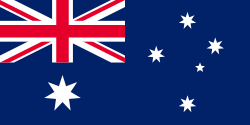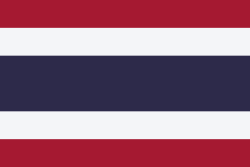Wu Jingyu
| Wu Jingyu | |||||||||||||||||||||||||||||||||||||||||||||||||||||||
 Wu Jingyu auf somalischer Briefmarke | |||||||||||||||||||||||||||||||||||||||||||||||||||||||
| Persönliche Informationen | |||||||||||||||||||||||||||||||||||||||||||||||||||||||
| Nationalität: | |||||||||||||||||||||||||||||||||||||||||||||||||||||||
| Geburtstag: | 1. Februar 1987 | ||||||||||||||||||||||||||||||||||||||||||||||||||||||
| Geburtsort: | Jiangxi | ||||||||||||||||||||||||||||||||||||||||||||||||||||||
| Medaillenspiegel | |||||||||||||||||||||||||||||||||||||||||||||||||||||||
|---|---|---|---|---|---|---|---|---|---|---|---|---|---|---|---|---|---|---|---|---|---|---|---|---|---|---|---|---|---|---|---|---|---|---|---|---|---|---|---|---|---|---|---|---|---|---|---|---|---|---|---|---|---|---|---|
Medaillen
| |||||||||||||||||||||||||||||||||||||||||||||||||||||||
Wu Jingyu (chinesisch 吳靜鈺, Pinyin Wú Jìngyù; * 1. Februar 1987 in Jiangxi) ist eine chinesische Taekwondoin. Ihre größten Erfolge sind zwei Weltmeistertitel aus den Jahren 2007 und 2011 sowie der Gewinn der Goldmedaille bei den Olympischen Sommerspielen 2008 und 2012.
Bei den Asienspielen 2006 in Doha gewann Wu Jingyu in der Klasse bis 47 Kilogramm die Goldmedaille. Ein Jahr später, bei den Taekwondo-Weltmeisterschaften 2007 in Peking, konnte sie den Weltmeistertitel in dieser Gewichtsklasse erkämpfen. Wu wurde in den chinesischen Kader für die Olympischen Sommerspiele 2008, die ebenfalls in Peking stattfanden, berufen. Sie startete im olympischen Taekwondo-Turnier in der Gewichtsklasse bis 49 Kilogramm. In der ersten Runde besiegte Wu Jingyu die Kenianerin Mildred Alango mit 7:0. Im Viertelfinale setzte sie sich gegen die Schwedin Hanna Zajc mit 8:1 durch, im Halbfinale gegen die Taiwanerin Yang Shu-chun mit 4:1. Im Finale besiegte Wu Jingyu die Thailänderin Buttree Puedpong.
Wu verteidigte ihre Goldmedaille bei den Asienspielen 2010 und wurde 2011 erneut Weltmeisterin. Bei den Olympischen Sommerspielen 2012 in London gewann sie erneut die Goldmedaille und bezwang dabei im Finale Brigitte Yagüe. 2010 uns 2012 errang sie zudem den Titel der Asienmeisterin. Bei den Olympischen Spielen 2016 in Rio de Janeiro unterlag Wu im Viertelfinale der späteren Silbermedaillengewinnerin Tijana Bogdanović aus Serbien.
Weblinks
- Wu Jingyu auf den Seiten von TaekwondoData.com
- Profil auf results.beijing2008.cn. (Memento vom 16. März 2009 im Internet Archive)
- Wu Jingyu in der Datenbank von Sports-Reference (englisch; archiviert vom Original)
- Wu Jingyu in der Datenbank von Olympedia.org (englisch)
| Personendaten | |
|---|---|
| NAME | Wu, Jingyu |
| ALTERNATIVNAMEN | 吳靜鈺 (chinesisch) |
| KURZBESCHREIBUNG | chinesische Taekwondoin |
| GEBURTSDATUM | 1. Februar 1987 |
| GEBURTSORT | Jiangxi, Volksrepublik China |
Auf dieser Seite verwendete Medien
Piktogramm der olympischen Sportart Taekwondo. Dies ist ein inoffizielles Beispielbild. Offizielle Piktogramme für die Sommerolympiade 1948 und alle olympischen Sommerspiele seit 1964 können in den Offiziellen Berichten gefunden werden.
Olympic Rings without "rims" (gaps between the rings), As used, eg. in the logos of the 2008 and 2016 Olympics. The colour scheme applied here was specified in 2023 guidelines.
Logo of Olympic Council of Asia
Olympic Rings without "rims" (gaps between the rings), As used, eg. in the logos of the 2008 and 2016 Olympics. The colour scheme applied here was specified in 2023 guidelines.
Flag of Australia, when congruence with this colour chart is required (i.e. when a "less bright" version is needed).
See Flag of Australia.svg for main file information.Chinese Taipei Olympic Flag. According to the official website of Chinese Taipei Olympic Committee, Blue Sky(circle) & White Sun(triangles) above the Olympic rings is neither the National Emblem of the Republic of China, nor the Party Emblem of Kuomintang (KMT), but a design in between, where the triangles do not extend to the edge of the blue circle, as registered at International Olympic Committee in 1981 and digitally rendered in 2013. Besides, the blue outline of the five-petaled plum blossom is broader than the red one. Moreover, the CMYK code of the blue one and the Blue Sky & White Sun is "C100-M100-Y0-K0", and different from the Olympic rings (C100-M25-Y0-K0). Note that it's the only version recognized by IOC.
Wu Jingyu
Autor/Urheber: Bridget Coila from Beijing, China, Lizenz: CC BY-SA 2.0
2008 Summer Olympics Taekwondo - Mildred Alango (KEN, blue) v. Wu Jingyu. (CHN, red)












